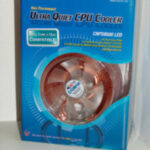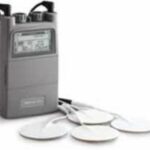We are now going to cover how to fix a broken pin on a PGA (Pin Grid Array) Socket CPU. Let us imagine that while you were trying to put back your CPU after applying thermal paste, or changing your CPU for a new one, or putting in a new heatsink, that you somehow managed to bend or break one of its precious pins. If you look at a CPU, you’ll see it has tens if not hundreds of little tiny pins attached to it. It uses these pins to communicate back and forth to the motherboard. Each and every pin is important and has an important function.
In the case of a bent pin that isn’t broken, you can take your CPU and place it on a flat surface. Find yourself a very thin wire, like from a straightened out safety pin, or a thin Swiss army knife. Now we’re going to use this wire to get inside the row of pins where your bent pin is located on the CPU. Try to chisel your way under the bent pin in a careful manner. If you can do that, then great, if not, then you’ll need to find a thinner wire that can. You are going to attempt to lift the bent pin very slowly back to its original position. You don’t want to do it too quickly because you’re going to risk breaking it off. These pins are made of a very thin and fragile metal. If you’ve managed to move the pin close enough to its original position but you’re having trouble straightening it out, you can use a mechanical pencil to try and accomplish that. This is done by using the open end of the pencil, making sure there’s no lead in the tip. Simply place the tip over the pin and bend it slowly like you’re operating a joystick. If you don’t have a mechanical pencil, you can try to use two thin wires instead.
Now let us imagine the worst case scenario which is the pin actually being broken. In this case, you can try to put the CPU back in the motherboard, because sometimes the pin that is broken might just be a ground pin or a reserved pin for some future functionality of the CPU. If that doesn’t work, then the next step is to take the pin or a very thin piece of wire that is about the pin’s size and bend it straight with a pair of pliers. You are now going to take the pin or this piece of wire and insert it into the socket hole where the pin should have gone on the motherboard. Then you will put the CPU on the socket and hope that the pin will make contact with the surface of the CPU where it was attached before.
There is a slight possibility that this may work, but don’t get your hopes up. If it does, then congratulations you have just “fixed” your broken CPU. The one drawback to this method is if any traumatic movement were to happen to your computer, say somebody accidentally tripped on it, then there is a slight chance the pin might get dislodged from the CPU base by just a fraction of a millimeter. If this happens while your computer is on, there is a possible risk of data corruption. But the chances of that are slim to none. It is always better to solder the pin back in place if you can.






